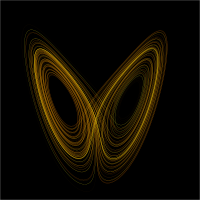
Photo from wikipedia
Discovering and tracking spatiotemporal event patterns have many applications. For example, in a smart-home project, a set of spatiotemporal pattern learning automata are used to monitor a user’s repetitive activities,… Click to show full abstract
Discovering and tracking spatiotemporal event patterns have many applications. For example, in a smart-home project, a set of spatiotemporal pattern learning automata are used to monitor a user’s repetitive activities, by which the home’s automaticity can be promoted while some of his/her burdens can be reduced. Existing algorithms for spatiotemporal event pattern recognition in dynamic noisy environment are based on fixed structure stochastic automata whose state transition function is fixed and predesigned to guarantee their immunity to noise. However, such design is conservative because it needs continuous and identical feedbacks to converge, thus leading to its very low convergence rate. In many real-life applications, such as ambient assisted living, consecutive nonoccurrences of an elder resident’s routine activities should be treated with an alert as quickly as possible. On the other hand, no alert should be output even for some occurrences in order to diminish the effects caused by noise. Clearly, confronting a pattern’s change, slow speed and low accuracy may degrade a user’s life security. This paper proposes a fast and accurate leaning automaton based on variable structure stochastic automata to satisfy the realistic requirements for both speed and accuracy. Bias toward alert is necessary for elder residents while the existing method can only support the bias toward “no alert.” This paper introduces a method to allow bias toward alert or no alert to meet a user’s specific bias requirement. Experimental results show its better performance than the state-of-the-art methods.
Journal Title: IEEE Transactions on Cybernetics
Year Published: 2018
Link to full text (if available)
Share on Social Media: Sign Up to like & get
recommendations!